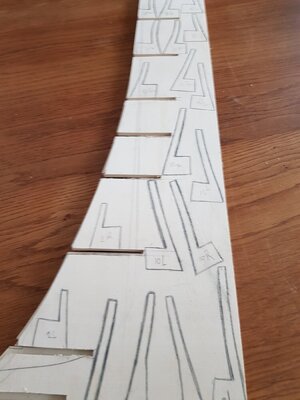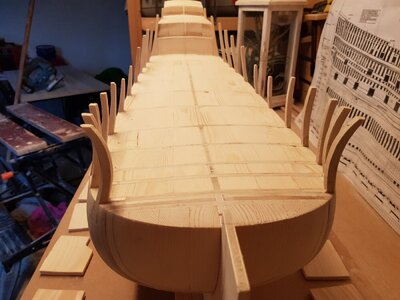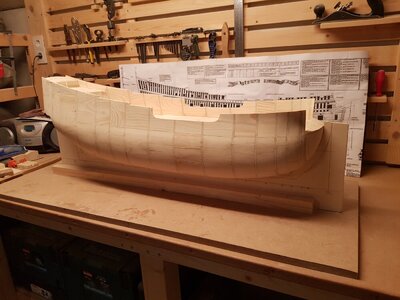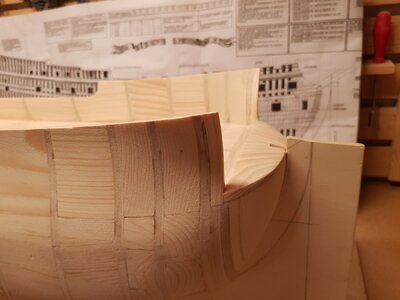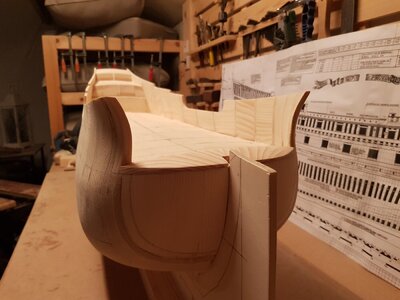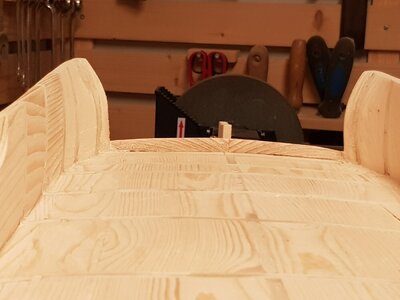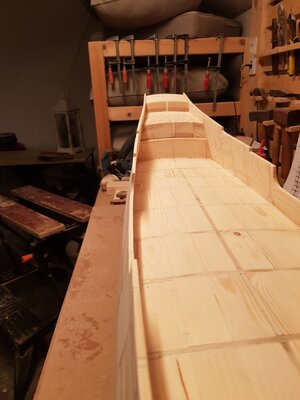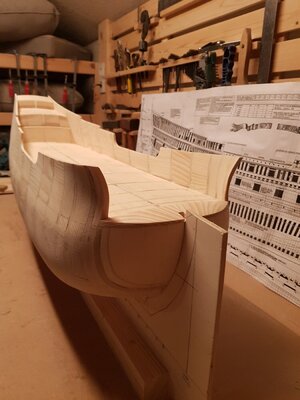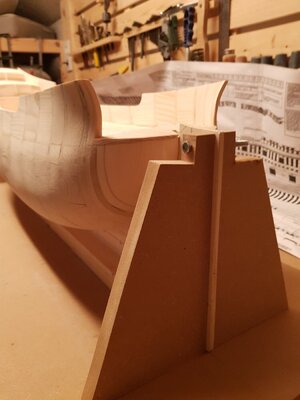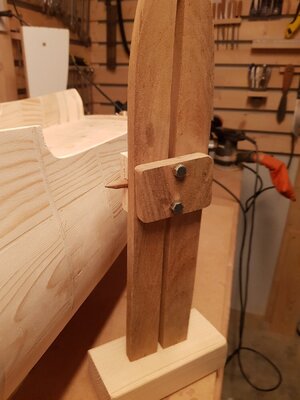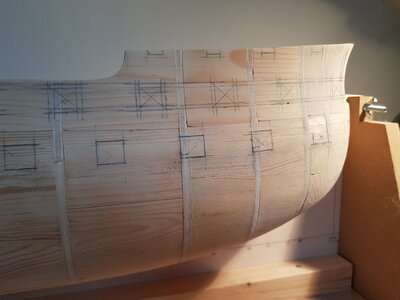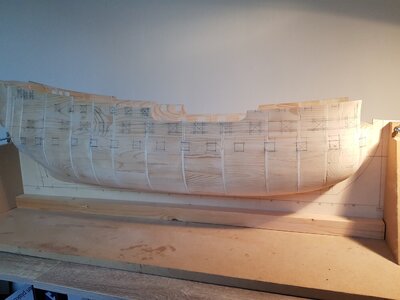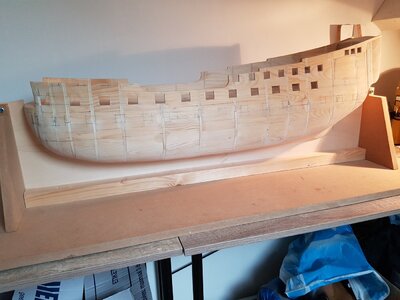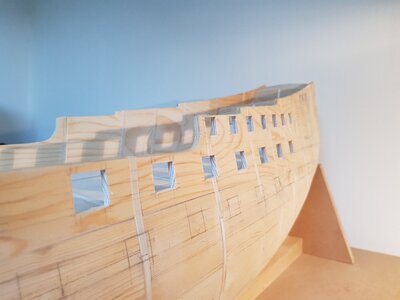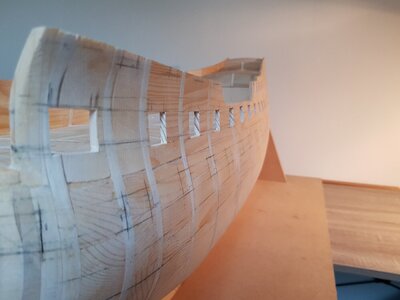I seem to remember he had some issues with moisture in his building site.Hi Herman,
As I remind Drazen had issues with his hull that overtime the planking cracked due to the solid hull shrinking and expanding differently then the planking. Did you investigate this with your solid hull construction to avoid you get similar problems?
During the beginning of my build I was working in my unheated garage where temperature and humidity are at an other level than indoors. As the base for the hull was completed and the most mess was behind me I took her inside to continue. At that time I came in the ideal situation to have a spare room, as two of my children had moved out.
I had initially not given it enough thought
I left it for rather a long time, after which I brought the hull back in shape again and continued.
Further building process will only take place indoors with a more or less constant temperature/humidity. I hope this will in itself be enough to prevent large issues.
On top of that the inside of the hull (photo's later in the build log) will be totally covered by a coating of paint and the outside will off course be covered by glue/planking. I hope this will be sufficient.




